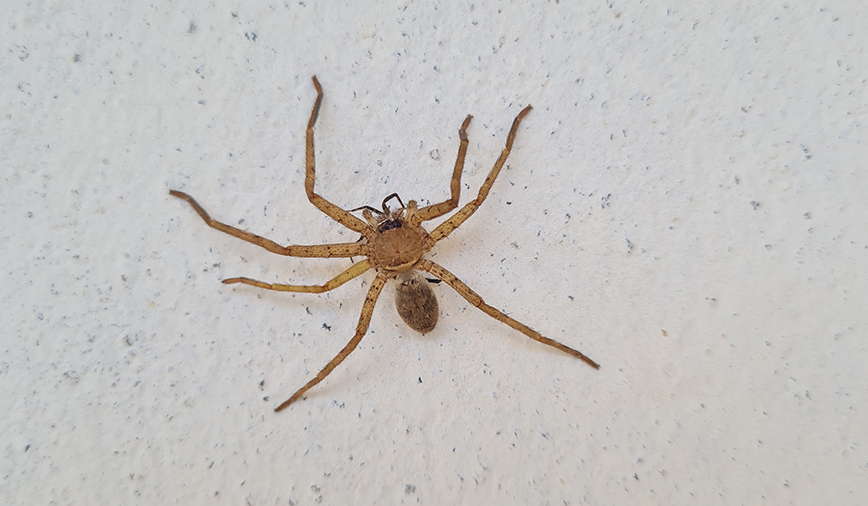I like a walk in the rain as much as the next person (probably more, actually) but last week’s cold, wet weather was a bit much even for me. So there I was, sitting indoors, yet confronted with the task of writing a column primarily about things outdoors. What’s a naturalist to do?
Luckily, fate intervened at a most opportune time. I was just heading back to the computer with a fresh cup of coffee, when what to my wondering eyes should appear but…a spider! Nature, right there on the wall!
The spider’s small, narrow body and long, spindly legs told me it was a cellar spider, a common species found throughout the world, but especially in the United States and Europe. Though they can live outdoors, they are most frequently found inside buildings, where they spin tangled webs (not lies) in corners and along floors and ceilings.
Chances are you’ve seen one of these gangly critters before. Their body measures about a quarter of an inch in length; their legs, all eight of ’em, are up to eight times the body length and are thin–really thin. The effect is one of a spider walking along on tall, thread-like stilts.
Even folks who aren’t fond of spiders will admit, cellar spiders don’t rank high on the scare scale. The slightest breeze (or puff from a curious observer) can send them tumbling. Yet these innocuous-looking invertebrates are tougher than they seem.
For one thing, they can live up to three years. Not bad for an arachnid whose body type might best be described as “flimsy.”
For another, their diet includes not just insects but also other spiders. In what might be the spider equivalent of a 97-lb. weakling picking on Charles Atlas, cellar spiders sometimes will visit the webs of other spider species. With a leg or two, they tap on the web, mimicking the motion of a trapped insect. Then, when the resident spider comes to investigate, pow! The cellar spider captures a spidey-licious meal. Afterward, the now-fortified cellar spider may move on, or it may elect to stay and set up housekeeping in the newly owner-less web.
This tendency to eat other spiders may have given rise to the mistaken belief that cellar spiders are highly venomous yet lack the power to puncture human skin. (The Discovery Channel show Mythbusters tackled this tall tale a few seasons back.) The myth may have arisen when someone observed the cellar spider eating other, larger spiders and reasoned that the delicate cellar spider must possess a pretty potent poison in order to accomplish such a feat. Yet cellar spider venom is no more toxic than average, and their fangs can indeed—just barely—pierce our skin.
Predation issues notwithstanding, the cellar spider does have a sweet side. Females encase their eggs in a thin layer of silk, then gently carry them in their fangs until the little spiderlings hatch.
Cellar spiders have a fun side, too. When threatened in its web, the spider will rock rapidly—so fast, in fact, that it becomes hard to see. Scientists believe this action may be a form of camouflage. Naturalists—at least this one—believe it is great rainy-day entertainment!
Pam Otto works for the St. Charles Park District and can be reached at potto@stcparks.org or 630-513-4346.

